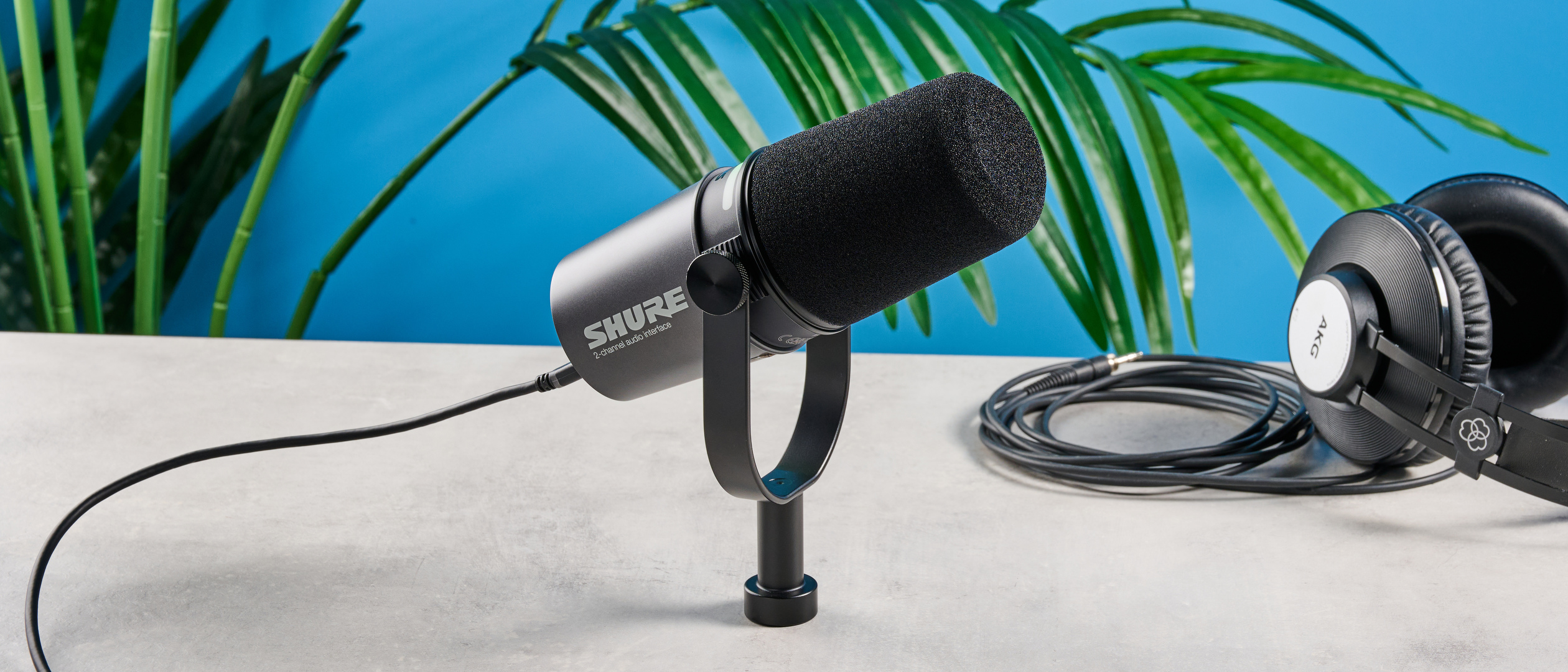Tom's Guide Verdict
The MV7i is one of the best microphones on the market today. Audio quality is excellent, plus you can digitalize any instrument and XLR mic with the patented virtual audio interface, or live-edit using a range of proprietary DSP-based features. Shure has once again raised the bar.
Pros
- +
Analogue-to-digital conversion
- +
Stereo, mono, or multi-track recording
- +
Fantastic companion app
- +
Second-to-none recording quality
- +
¼” input for instrument
Cons
- -
No desktop stand or boom arm
Why you can trust Tom's Guide
Shure’s newest mic, the MV7i, is not only a, high-quality XLR and USB-C mic, but the $349 price tag also includes a wonderfully versatile audio interface. Naming this one of the best microphones could be a no-brainer.
Most decent audio interfaces hover around $100-$200, so a studio-quality microphone and an audio interface for only $70 more than a Shure MV7+ — which I gave 4* — is a wonderful price. Given the unbeatable audio finesse of the MV7+ mic included in this package, this would be perfect for musicians, podcasters, and content creators who need professional-quality recording.
Not only does the MV7i sound great, it also comes loaded with the excellent Motiv Mix app. Shure’s companion app has a range of customization controls, including studio effects like reverb and noise cancellation. Is this kit worth $349, though? Find out in this Shure MV7i microphone review.
Shure MV7i microphone review: Cheat sheet
- What is it? A mic and audio interface with two inputs
- Who is it for? Podcasters, musicians and people who need to link up analog and digital equipment
- What does it cost? $349 / £329
- What do we like? It can digitalize an analog (XLR) mic and includes two mic inputs so you don’t need to get a separate mixer
- What don’t we like? It doesn’t come with a desktop stand or boom arm
Shure MV7i microphone review: Specs
Shure MV7i microphone review: Price & availability
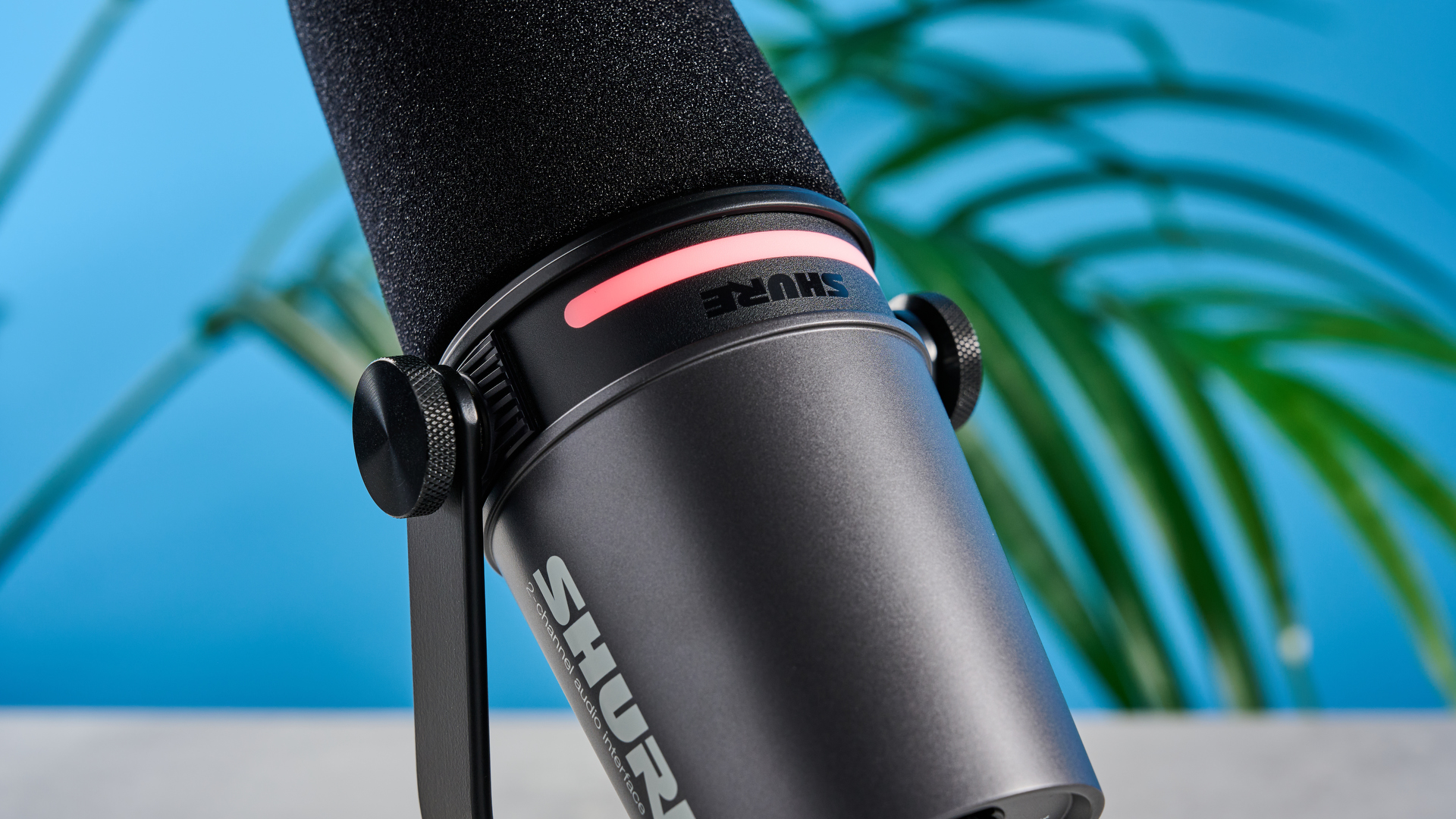
The Shure MV7i is a microphone and an audio interface in one. The price is a little higher than you might expect for a microphone — but that’s because you won’t need to buy a separate interface. That means you can plug in an external instrument or second mic without forking out for an expensive interface.
The MV7i is available directly from Shure U.S. for $349 and Shure U.K. for £329. It’s effectively an MV7+ microphone with a combined virtual audio interface. Without the interface, the MV7+ is $279 from Amazon U.S. and £269 at Amazon U.K. If you only need a plug-and-play microphone, you’d be better off with an entry-level mic, like the Shure MV6 ($149), or something even cheaper like the Cherry Ngale R ($99). I would only recommend the MV7i for semi-professional/serious musicians, content creators, or podcasters.
Shure MV7i microphone review: Design & controls
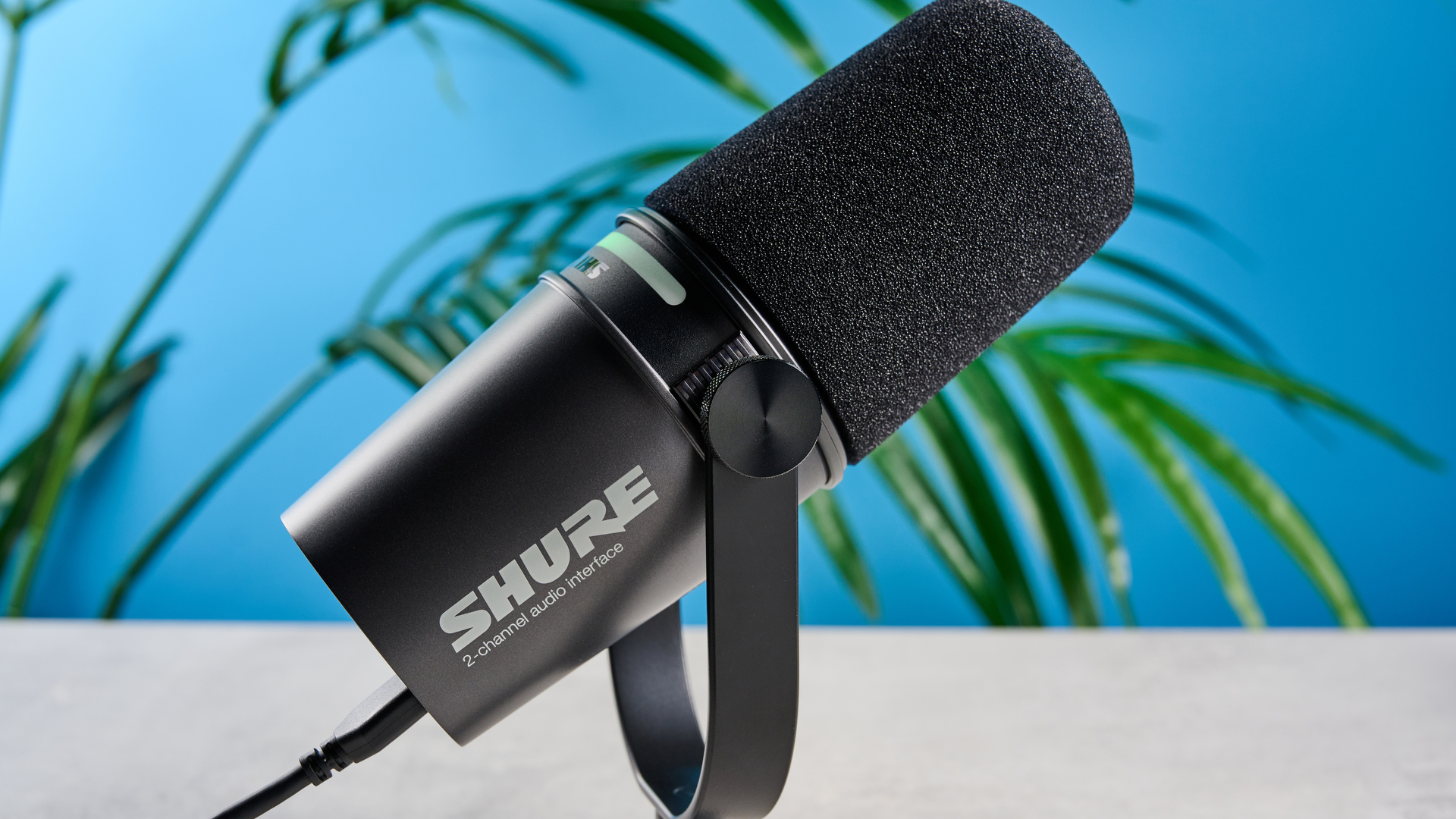
The MV7i is exactly what you’d expect from Shure at this point: well-made and intuitive. The design is identical to that of the Shure MV7+ (as it is structurally the same microphone), including the handy mute-unmute touchpad I lauded in its review.
Unfortunately, there’s no desktop stand included in the box, so you’ll need to shell out an extra ~$50-100 for one.
Get instant access to breaking news, the hottest reviews, great deals and helpful tips.
The audio interface, as mentioned above, is completely virtual. There’s no bulky mixer you have to juggle while using the MV7i. It’s loaded into the mic automatically, which means it’s super easy to use. Just plug a USB-C cable into the back of the mic, and you’re good to go. This virtual interface is now patented by Shure, too.
Shure MV7i microphone review: Features & connectivity
The most attractive feature of the MV7i is its patented virtual audio interface. This nifty addition means you can use the MV7 mic (a digital USB-C and XLR microphone) simultaneously with an analog XLR microphone (the SM4, SM7B) or an XLR instrument without requiring a separate piece of tech. Normally you would have to buy expensive adaptors or an audio interface, which can go for over $200.
If you need two mics for your podcast, this could be one of the best podcasting mics for you. Of course, you could plug two USB-C mics into your laptop, but if you need XLR recording quality or you already have an XLR mic, the MV7i could solve those problems.

When you plug the mic into your laptop, you can choose ‘Mixdown’ ‘Multi-track’ and ‘Stereo’ recording modes. The mixdown is the standard mode you’d use if you were a podcaster or content creator. ‘Multi-track’ and ‘Stereo’ are designed for musicians as you can record from the MV7i and your chosen instrument in two separate channels, even if your instrument is outputting into the MV7i.
As I’ll discuss further in the ‘Audio quality’ section — where you’ll be able to hear audio clips of these features in action — the MV7i is stuffed full of premium features, such as Shure’s proprietary ‘Real-time Denoiser’, ‘Digital Popper Stopper’, and ‘Smart Gate’. The ‘Denoiser’ reduces ambient sound (excellently), the ‘Popper Stopper’ is a pop filter, and ‘Smart Gate’ reduces crosstalk by decreasing inactive mic gain.
Shure MV7i microphone review: App
As with other Shure mics like the MV7+ and the MV6, the MV7i comes with the companion software Motiv Mix. For this review, I used the pre-release developer software, so my screenshots will look a little different than you’ll see when the app is released to the public. However, I have used the public version of the app before and the UI is mostly unchanged — my version was just a different color.
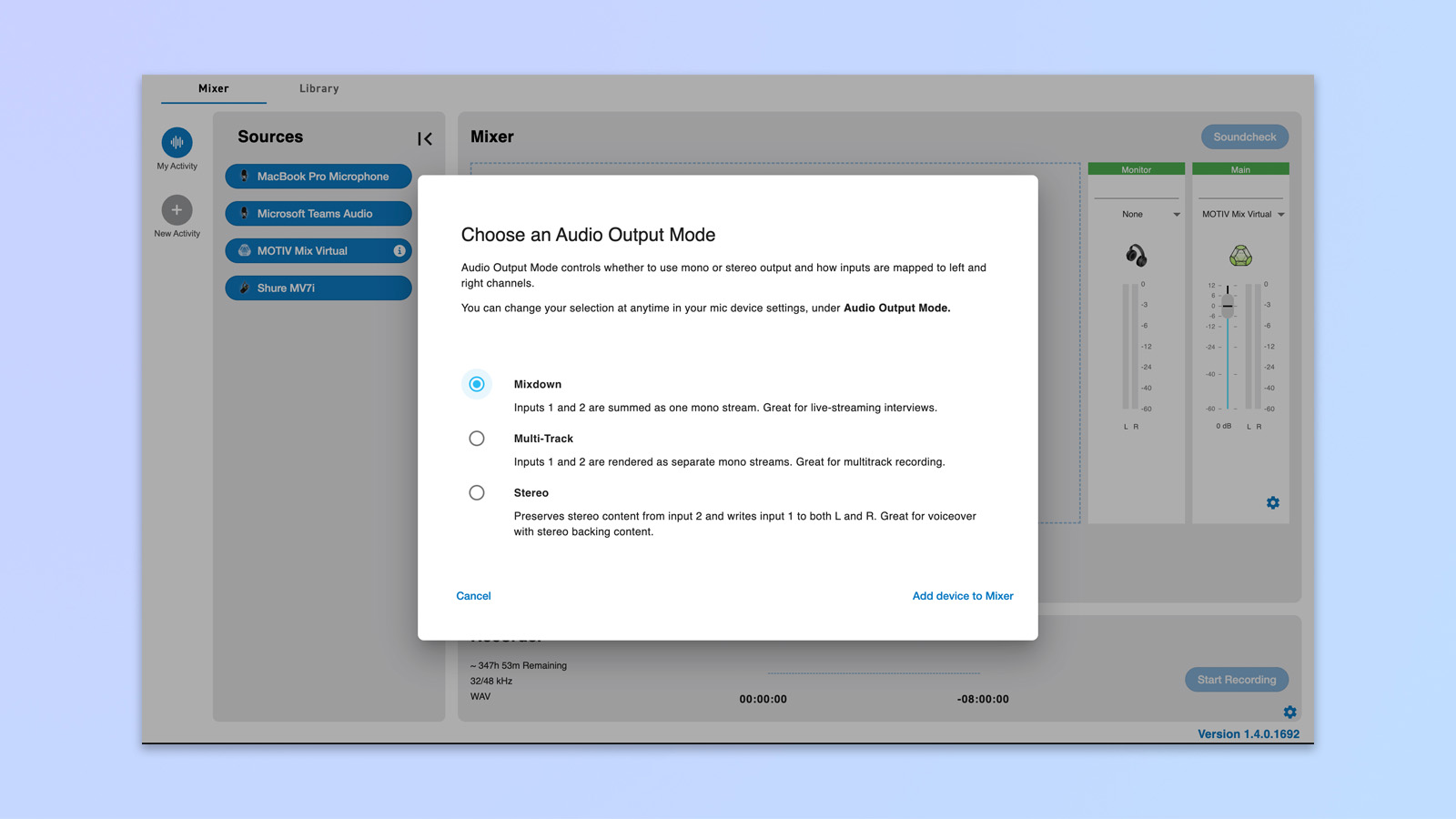
As you can see, there’s a range of features you can enable easily in the app. I love ‘dark’ vocal tones because they increase the lower frequencies in my voice, which makes me sound older and wiser.
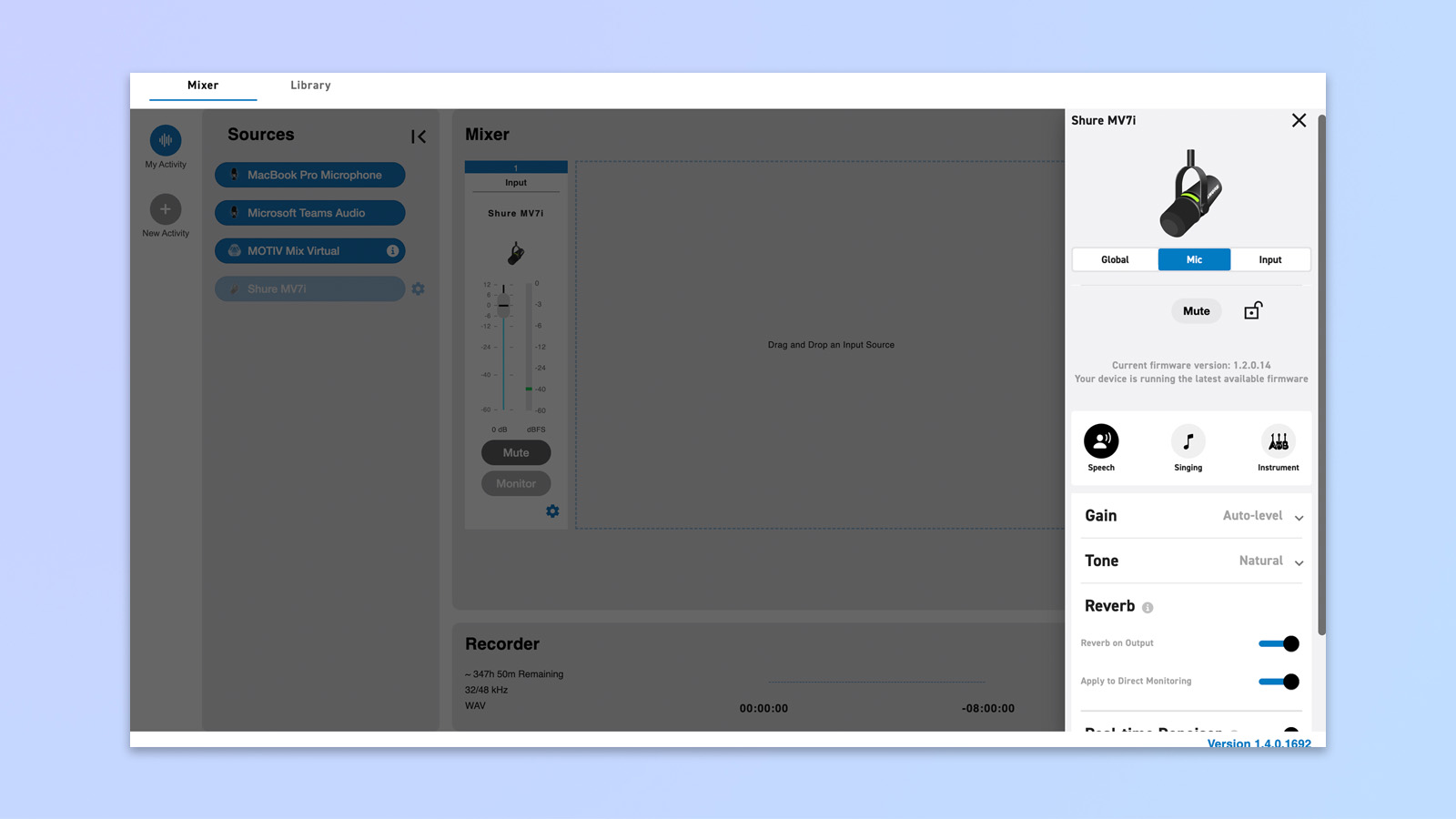
I recommend downloading Motiv Mix as soon as your MV7i arrives and playing around with it before you need to use the mic. You’ll be able to program the MV7i's features in the Motiv Mix app and the mic will remember said features when you open different recording software.
Shure MV7i microphone review: Audio quality
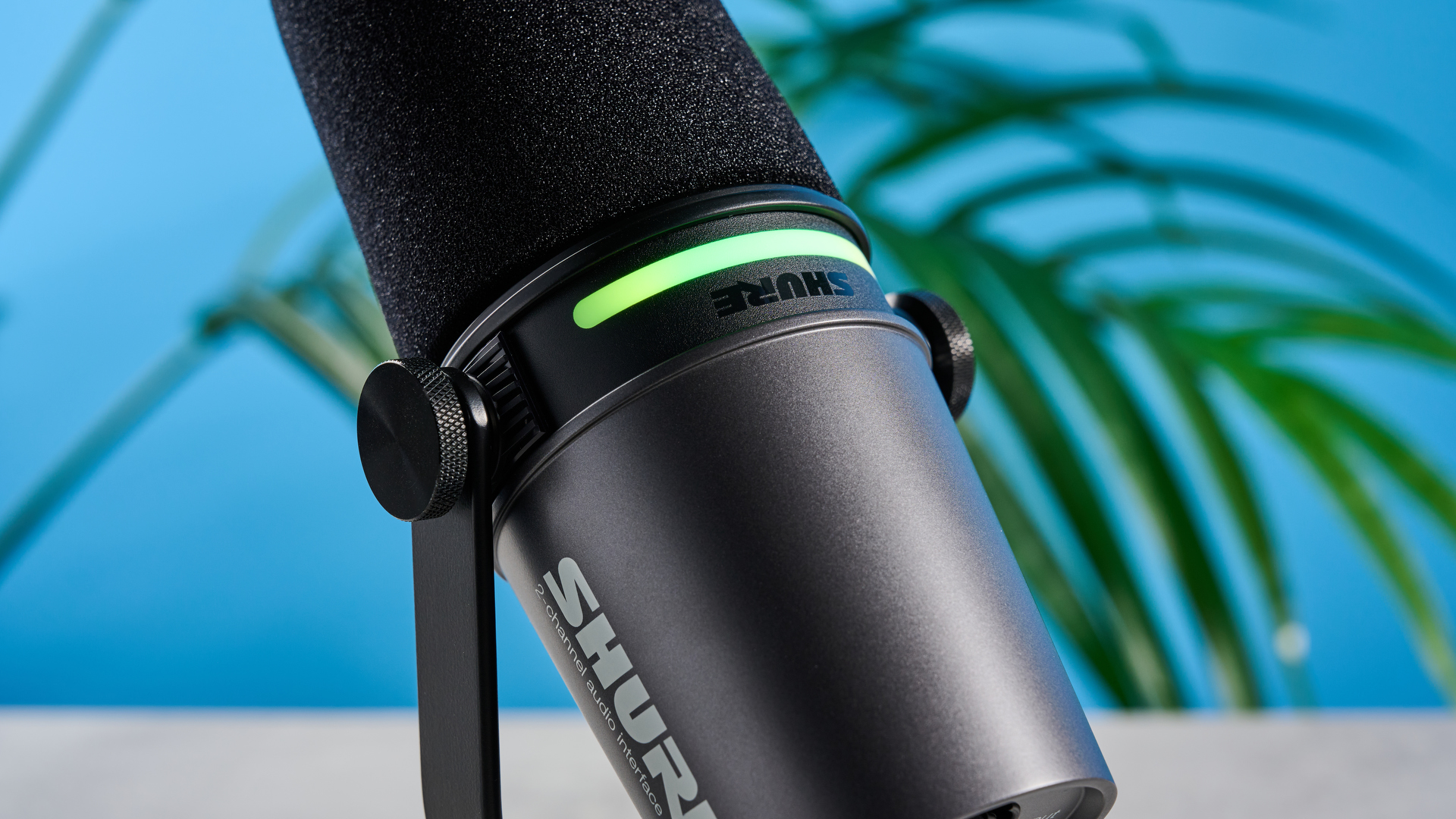
As I’ve come to expect with Shure microphones, the MV7i’s audio quality is beyond my wildest dreams. Alright, that might be a slight exaggeration, but despite having tested so many Shure mics, I always find myself taken by surprise at how great they sound — and the MV7i is no exception. Just listen to these audio clips.
This was recorded straight out of the box directly into Motiv Mix. I didn’t customize any features or edit the clip at all. My voice sounds unbelievably crisp and you wouldn’t be able to tell that I wasn’t in a soundproofed studio — just my bedroom.
I wanted to test the efficiency of the Denoiser — I loved this feature on previous Shure microphones.
When I listened to this back, my jaw dropped. And this time I’m not exaggerating at all — it really did drop. I couldn’t believe that I was recording this audio with an 80dB white noise track playing in the background. If I didn’t tell you, you wouldn’t know the circumstances of this recording.
This clip above is the exact same white noise track with the Denoiser disabled. The difference is astounding — while the white noise still isn’t as loud as with an inferior microphone (yet another credit to the MV7i), you can immediately hear the profound effect of the Denoiser.
In the clip below I wanted to test the proficiency of the Digital Popper Stopper — another proprietary feature designed by Shure. It’s a pop filter built into the microphone using digital signal processors.
As you can hear, the Digital Popper Stopper is incredibly good at softening those plosive pops you might expect. For a direct contrast, the clip below is the same speech recorded without the Digital Popper Stopper.
While my plosives still aren’t painfully harsh, you can definitely notice the difference between the pop filter switched on and off.
Just to give you my final thoughts on the MV7i microphone, I recorded a condensed version of the verdict below. This is a great microphone for versatility and professionalism. Although it’ll set you back over $300, you won’t need to buy a separate audio interface, theoretically saving you upwards of $200.
Shure MV7i microphone review: Verdict
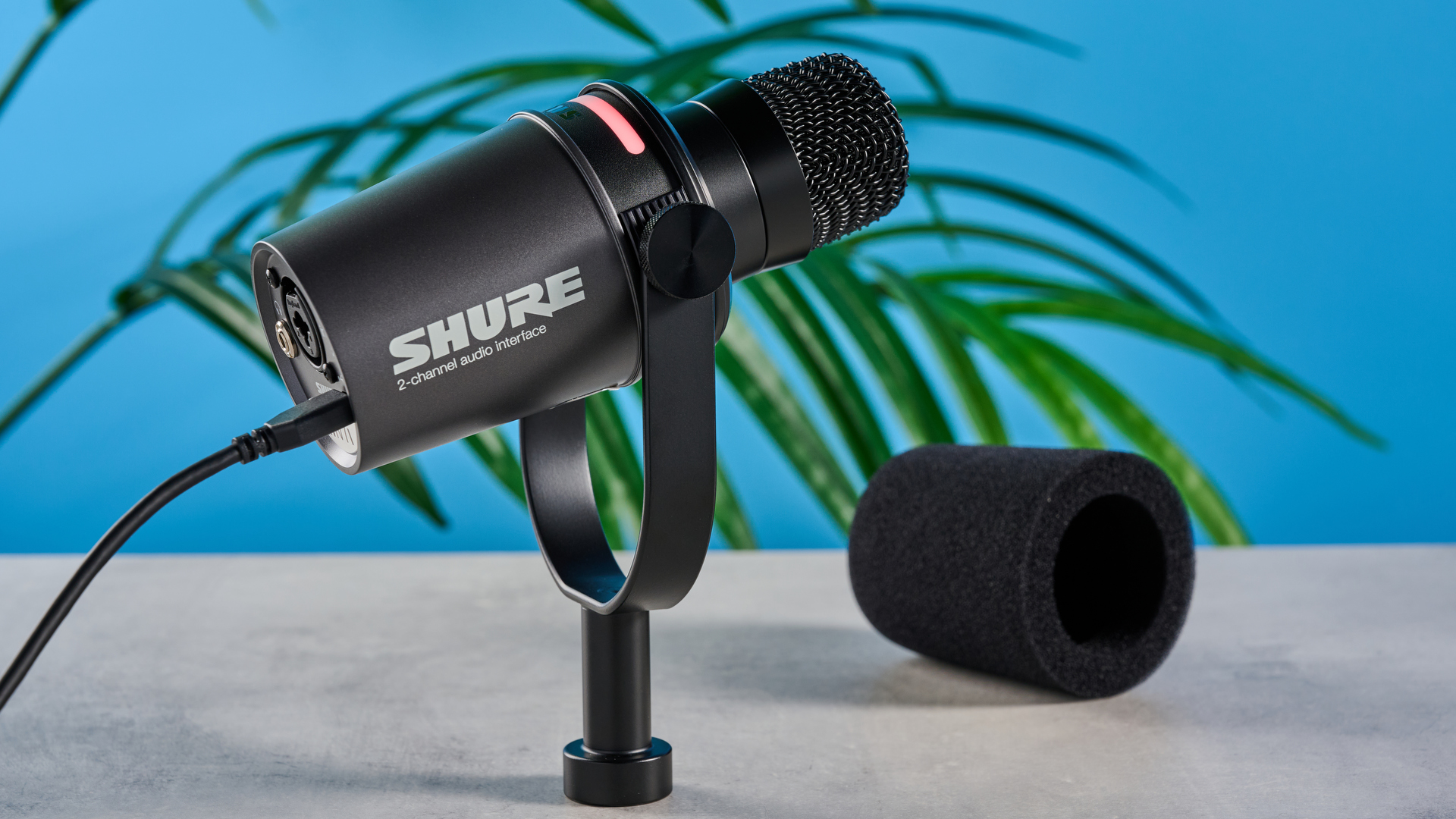
As outlined in the audio recording above, the MV7i is a fantastic microphone for those wanting to branch out into more professional recording. Despite being really easy to use, this is not designed to be a beginner mic. If you’re a beginner — or on a budget — I’d recommend the fantastic Shure MV6, which is a USB-C plug-and-play mic. I wish it came with a desktop stand as standard, but you can buy one from Shure for an extra cost.
While there’s not as much of a learning curve with the MV7i as you’d expect from the semi-daunting ‘digital and analogue microphone with virtual audio interface’ description, its range of features might be overkill for the average podcaster. However, if you need two channels, or you’re a recording musician, there’s no doubt in my mind: this is the microphone for you.

Erin Bashford is a staff writer at Tom’s Guide, covering reviews. She has a Masters in Broadcast and Digital Journalism from the University of East Anglia. As an ex-barista and avid home cook, she's got a soft spot for coffee and home tech; as a proud music nerd, she's always on the hunt for the best headphones, speakers, and earbuds. In her spare time you can find her reading, practising yoga, writing, or stressing over today’s NYT Games.
